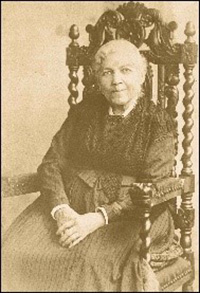
Harriet Jacobs
Harriet Jacobs was born into slavery in North Carolina. Her single work, “Incidents in the Life of a Slave Girl,” published in 1861 under the pseudonym Linda Brent, and edited by famed Abolitionist Lydia Maria Child, was one of the first autobiographical narratives about the struggle for freedom by an African American woman. Today, her book is compared with the “Diary of Anne Frank” as being two of the most important autobiographies depicting the resiliency of young women during times of great struggle. During the years leading up to the Civil War, she became an abolitionist and national speaker to end slavery.
On May 14, 1865 Jacobs, in the company of her daughter Louisa and Julia Wilbur, a well-known abolitionist, left Washington, DC to travel to Richmond, Virginia to see first-hand the fallen rebel capital. Richmond at that time was a city in ruins. The former Confederate capital had fallen to advancing Union troops a month earlier and during the confusion a fire was set among the many tobacco warehouses and nearly one third of the city was in flames. As Confederates and whites fled the city, the former enslaved came forward to rejoice and publically proclaim their new found freedom. Within the month, Richmond was under martial law and Northern officials poured into the city to set up the Bureau of Refugees, Freedmen, and Abandoned Lands to oversee the transition of enslaved African Americans to full citizenship.
Julia Wilbur kept an almost daily account of her travels through post war Richmond, giving vivid accounts of what she had seen and who she had met. One Richmond family that spent much time taking the group on tours of Richmond were the Richard Gustavus Forrester family. Forrester was a prosperous dairy farmer and a free person of color who lived in Richmond before, during and after the war. On May 17th, 1865 she writes:
“Called at Mr. Forrester’s, and all went to Jeff Davis House. Plastered outside and looking shabby, but the interior of the few rooms that we saw showed evidence of fine taste.”
The next day they called at the Forrester home again and took a tour of the Libby Prison where Union soldiers were kept during the war and the former Lumpkin’s Jail where slaves were bought and sold recounting:
“Called at Forresters. Mrs. Wells, her brother, & John Winston went with our whole Company to the City Jail where the Whipping Post is. This is so near Mrs. F’s that we could plainly hear the blows as they were inflicted on the poor victims. Only the Saturday before the surrender screams were heard there for 2 hrs. Jeff’s house is on a bank & from it he could look down into the jail yd. & it is so near that he could hear the screams of the poor creatures, of women perhaps when they were stripped & fastened to the W. post with irons, This is a horrid place.”
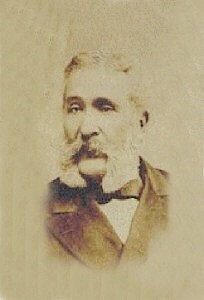
Richard Gustavus Forrester
Taking time in the afternoon to relax, they had tea with the Forrester family who lived close by the former Whitehouse of the Confederacy as recounted in the diary:
“Took tea by invitation at Mr. Forrester’s. Quite a company. We drank from Jeff. Davis’s tea cups, eat with his knives & forks & eat strawberries & ice cream from his china saucers— I sat in the porch & looked at Jeff’s house not many rods distant, & tried to realize that I was in Richmond— The morning of the evacuation people fled & left their houses open. goods were scattered about the street, & Jeff’s servants gave this china to Mr. Forrester’s boys. That morning must have been one long to be remembered by those who were there. All night long there was commotion in the streets. Jeff. & his crew were getting away with their plunder.”
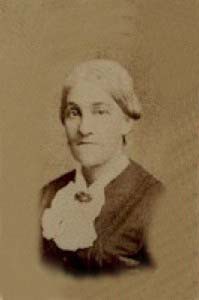
Narcissa Forrester
The group of visiting ladies would remark how much they enjoyed “spooning strawberries and ice-cream from the saucers of the former Jefferson Davis.” A highly interesting concoction of edible delicacies in a city that had endured four long years of food shortages and near-starvation of population both free and slave.
Later, the Forrester family including Richard and his wife Narcissa along with their daughter Lucretia Wells and sons Richard and William would escort the group throughout the city including visits to African American churches, the poor house and capitol building. The group of female abolitionists would spend nearly a month in Richmond, mostly in the company of the Forrester family. The Forrester family that entertained Harriet Jacobs, Julia Wilbur and their party were Richard Forrester and his wife Narcissa, my maternal great, great grandparents. Their spacious home located at the corners of College and Marshall Streets sat directly across the street from the Medical College of Virginia and around the corner from the former Whitehouse of the Confederacy. Richard Forrester would go on to become the first man of color to serve on both the Richmond City Council and School board during Reconstruction.
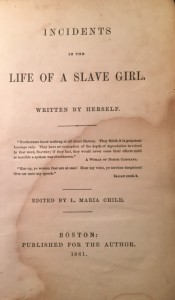 Today, a material reminder and rare keepsakes of that visit between Harriet Jacobs, Julia Wilbur and the Forrester family is an original 1861 printing of Jacob’s famous “Incidents in the Life of a Slave Girl” book, and numerous pieces of silverware, cups and saucers in the Keith Stokes Family collection.
Today, a material reminder and rare keepsakes of that visit between Harriet Jacobs, Julia Wilbur and the Forrester family is an original 1861 printing of Jacob’s famous “Incidents in the Life of a Slave Girl” book, and numerous pieces of silverware, cups and saucers in the Keith Stokes Family collection.
Sources
- Julia Wilbur Diary 1860-1866 at Haverford College, Quaker and Special Collections
- Saving Old Glory - March 31, 2023
- Keith Stokes receives Outstanding Achievement in Leadership Award - December 22, 2022
- Harriet Jacobs - December 22, 2022


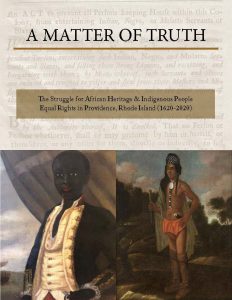 Click on image to view pdf
Click on image to view pdf
July 7, 2017 at 9:27 pm
Has the book been re-printed for purchase?
July 11, 2017 at 3:52 am
A reprint version of the book is widely available.
December 30, 2018 at 9:19 pm
bobbi.c.jeffries@gmail.com
Would absolutely love a reprint. How can I purchase a copy please?
July 8, 2017 at 5:43 am
How can one obtain a reprint copy of this publication?
July 11, 2017 at 3:53 am
The reprint is widely available.
July 17, 2017 at 4:29 am
I enjoyed reading her story, my family has a book written, “Children of Strangers”, about the Carson’s of Virginia.
January 6, 2020 at 9:53 pm
Thank you